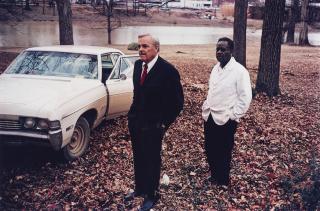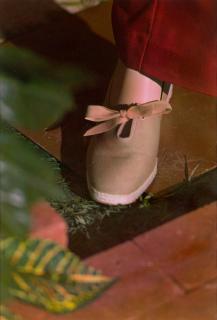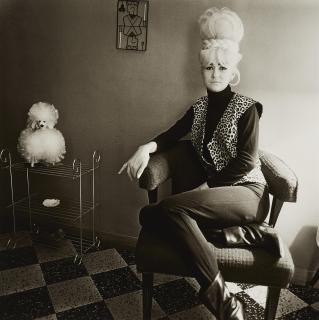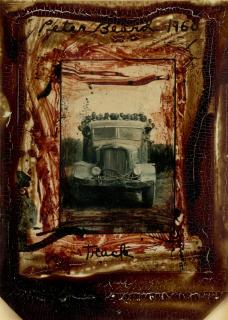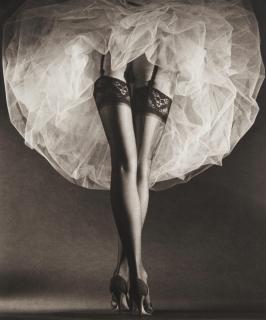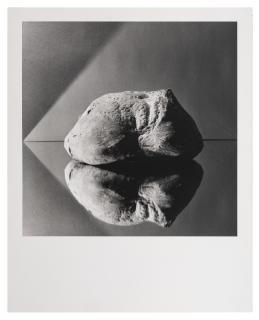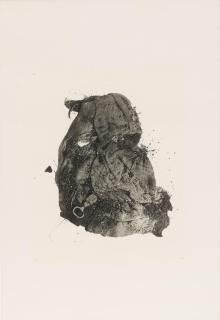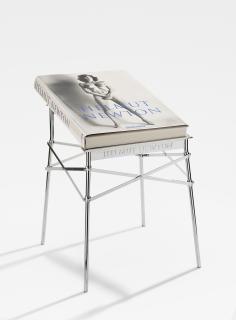William Eggleston born 1939
The artist William Eggleston
- US American photographer with a focus on documentary photography.
- Is regarded as a pioneer of artistic colour photography.
- First solo exhibition in 1976 at the Museum of Modern Art in New York.
William Eggleston, born on 27 July 1939 in Memphis, Tennessee, is today considered a pioneer of artistic colour photography. He started taking photographs as a child and continued on this path during his studies. In the 1950s, he began working as a freelance photographer in Washington, D.C., among other places, and took photographers such as Henri Cartier-Bresson or Robert Frank and Walker Evans as his models. In the 1960s, he switched to colour photography and spent a lot of time in New York City. Important contacts at this time were Diane Arbus, Lee Friedlander, Garry Winogrand and, above all, John Szarkowski, who was curator in the photography department of the Museum of Modern Art in New York in 1967.
Szarkowski enabled Eggleston to have his first solo exhibition, entitled Photographs by William Eggleston, at the important New York museum in 1976. The exhibition is considered a key moment in Eggleston's artistic career - his works were highly polarised at the time and at the same time are still considered groundbreaking for artistic colour photography today.
The media criticism of his work at the time resulted from the fact that such a photographic representation of plain motifs, which initially appeared not to be worth photographing and in some cases only develop their full effect in combination with their intense colour, did not exist until then. This exhibition of his works thus paved the way for modern artistic colour photography. The Red Ceiling Greenwood, Mississippi (1973) is still often cited as an example of his art.
In addition, he was the first art photographer to use a special noble printing process, the dye transfer process, which until then had only been known from advertising and print magazines. Other special features of his photographs, apart from the colour focus, are the frog perspective often adopted and the unusual picture compositions. Due to their overall effect, his pictures are often compared with the paintings of Edward Hopper. Eggleston is still considered the »Godfather of Colour Photography« because of his style, which directs the viewer's gaze to the effect and perception of colour. He served as a source of inspiration for famous filmmakers such as Sophia Coppola or David Lynch.
Der Künstler William Eggleston
- US-amerikanischer Fotograf mit Schwerpunkt auf dokumentarischer Fotografie.
- Gilt als Wegbereiter der künstlerischen Farbfotografie.
- Erste Einzelaustellung 1976 im Museum of Modern Art in New York.
William Eggleston, geboren am 27. Juli 1939 in Memphis, Tennessee, gilt heute als Pionier der künstlerischen Farbfotografie. Er begann schon im Kindesalter zu fotografieren und setzte diesen Weg während seines Studiums fort. In den 1950er-Jahren fing er damit an, unter anderem in Washington D. C. als freischaffender Fotograf zu arbeiten und nahm sich Fotografiekünstler wie Henri Cartier-Bresson oder Robert Frank und Walker Evans zum Vorbild.
In den 1960er-Jahren wechselte er dann zur Farbfotografie und hielt sich viel in New York City auf. Wichtige Kontakte in dieser Zeit waren Diane Arbus, Lee Friedlander, Garry Winogrand und vor allem John Szarkowski, der 1967 als Kurator im Museum of Modern Art in New York in der Fotografieabteilung tätig war.
Dieser ermöglichte Eggleston 1976 seine erste Einzelausstellung mit dem Titel Photographs by William Eggleston. Die Ausstellung gilt als Schlüsselmoment der künstlerischen Laufbahn Egglestons – so polarisierten seine Werke damals stark und gelten gleichzeitig bis heute als bahnbrechend für die künstlerische Farbfotografie.
Die damalige mediale Kritik an seiner Arbeit resultiert daraus, dass eine derartige fotografische Darstellung von schlichten Motiven, die zunächst als nicht fotografierenswert erschienen und teils nur in Kombination mit ihrer intensiven Farbe die volle Wirkung entfalten, bis dahin nicht existierte. Diese Ausstellung seiner Werke ebnete der modernen künstlerischen Farbfotografie damit den Weg.
Als Beispiel für seine Kunst wird bis heute gerne die Rote Zimmerdecke Greenwood, Mississippi (1973) genannt. Zudem nutzte er als Erster Kunstfotograf das Dye-Transfer-Verfahren, das bis dato nur aus der Werbung und Printmagazinen bekannt war. Neben der farblichen Fokussierung stechen in Egglestons Arbeiten vor allem die häufig eingenommene Froschperspektive sowie die ungewöhnlichen Bildkompositionen hevor.
So werden seine Bilder aufgrund ihrer Gesamtwirkung oft mit den Gemälden von Edward Hopper verglichen. Eggleston gilt aufgrund seines Stils, der den Wahrnehmung des Betrachters vor allem auf die Farbe lenkt, bis heute als »Godfather of Colour Photography«. Er diente als Inspirationsquelle für bekannte Filmschaffende wie Sophia Coppola oder David Lynch.


